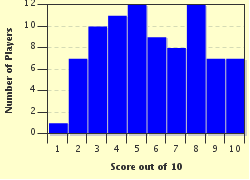Quiz Answer Key and Fun Facts
1. One of the greatest generals of all time, Julius Caesar, formed his own cryptic method that has become known as "Caesar's Cipher". By doing what exactly?
2. It was in 1553 that the Italian cryptologist Giovani Bellaso invented one of the most enduring ciphers of all time. It remained unbroken for more than 300 years and is widely known by what name?
3. In 1586, an evil plan to assassinate Queen Elizabeth I involved a coded letter. The failure of the plan led to the execution of Queen Mary Stuart of Scotland. What was the name of this mischievous project?
4. The "Great Cipher" code of the French forces was unbreakable till this general managed to decipher it in 1811, thus playing a significant role in the result of the Napoleonic Wars. Who was this general?
5. In January 1917, British Intelligence intercepted the notorious Zimmermann Telegram. A note encoded and secretly sent by the foreign secretary of the German Empire, Arthur Zimmermann, in his attempt to attract allies and initiate a war against the United States. What was the country that the Germans sent the telegram to?
6. The breaking of the Enigma Code by Alan Turing's team at Bletchley Park is possibly the most famous story in the history of cryptanalysis. Which German engineer is credited with the design of the original Enigma machine?
7. By the end of 1941, intelligence reports convinced the Germans that the Allies could read their coded "Enigma" communications, so they produced the "triton" system which had a security addition that was different to the previous Enigma machines. What was this?
8. This "colorful" Japanese machine, used during World War II, was known as what to the U.S Intelligence Services?
9. The "Venona Project" was a massive counter-intelligence program which aimed to intercept thousands of Soviet Union intelligence messages. What country was this initiated from?
10. The biggest espionage leak in U.S. Navy history started when naval officer John A. Walker helped the Soviets decipher more than 1 million encoded naval messages after providing them a key list for the encryption machine KL-47. What was his motive to spy for the Soviets?
Source: Author
skatharaki
This quiz was reviewed by FunTrivia editor
stedman before going online.
Any errors found in FunTrivia content are routinely corrected through our feedback system.

